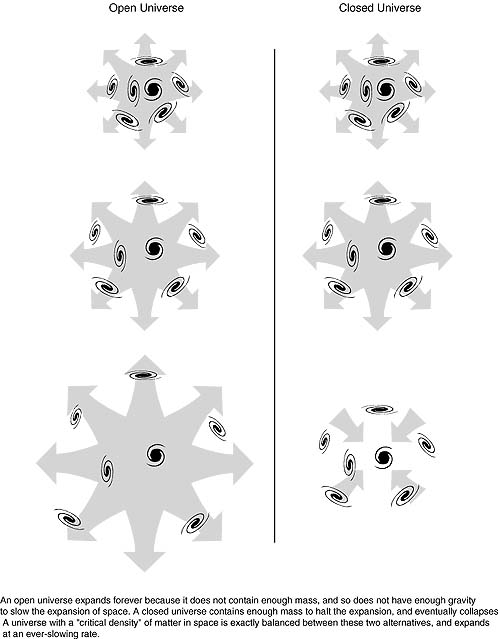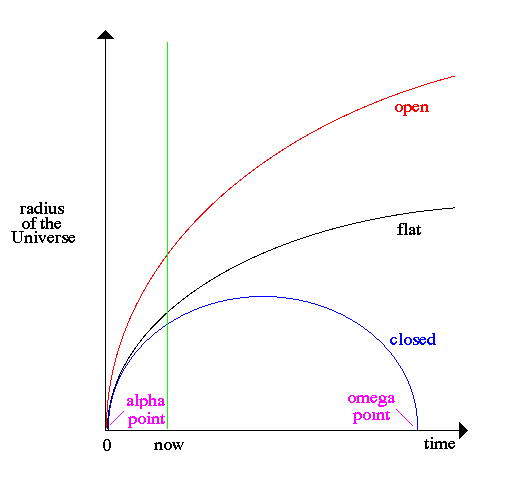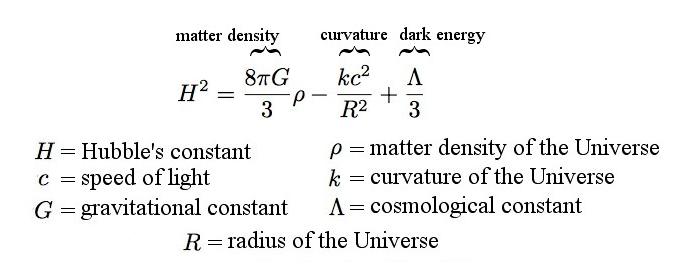
|
There are two possible futures for our
Universe, continual expansion (open and flat), or turn-around and collapse
(closed). Note that flat is the specific case of expansion to ever slowly
speeds aproaching zero velocity.
.. One of the key factors that determines which history is correct is the amount of mass/gravity for the Universe as a whole. If there is sufficient mass, then the expansion of the Universe will be slowed to the point of stopping, then retraction to collapse. If there is not a sufficient amount of mass, then the Universe will expand forever without stopping. The flat Universe is one where there is exactly the balance of mass to slow the expansion to zero, but not for collapse. |

.. |
.. The future of the Universe is usually dipicted in a radius versus time diagram. Here the `radius', or scale factor, of the whole Universe is shown with respect to time. Regardless of the overall curvature of the Universe, we can charactersize its size with a scale factor in order to measure the change in spacetime as the Universe expands. A closed Universe will expand to some maximum size than contract back to zero. A flat or open Universe will increase in size forever. .. Our position in this diagram must be near the origin since it is difficult to directly determine which type of Universe we currently live in (at later times it becomes easier). Notice that since the Universe is currently 14 billion years, the time axis is measured in very long timescales. Hubble's constant measures the expanision rate of the Universe as it is today, thus is the slope of the radius-time diagram for time=today. If the Universe were empty, i.e. no matter, then the expansion rate would remain unchanged with time. The existence of matter, and therefore gravity, causes all of the possible Universes to slow down with time. |

.. |
.. The parameter used to measure the rate of change in the expansion rate of the Universe is called qo, the deaccelration parameter (although, under the right conditions, qo can be positive and the Universe acceraltes). Knowledge of Ho and qo are the true goals of observational cosmology, for with both parameters it is possible to extract distances and ages of all things in the observable Universe. |
In modern cosmology, the different classes of Universes (open, flat or
closed) are known as Friedmann universes and described by a simple equation:
..


